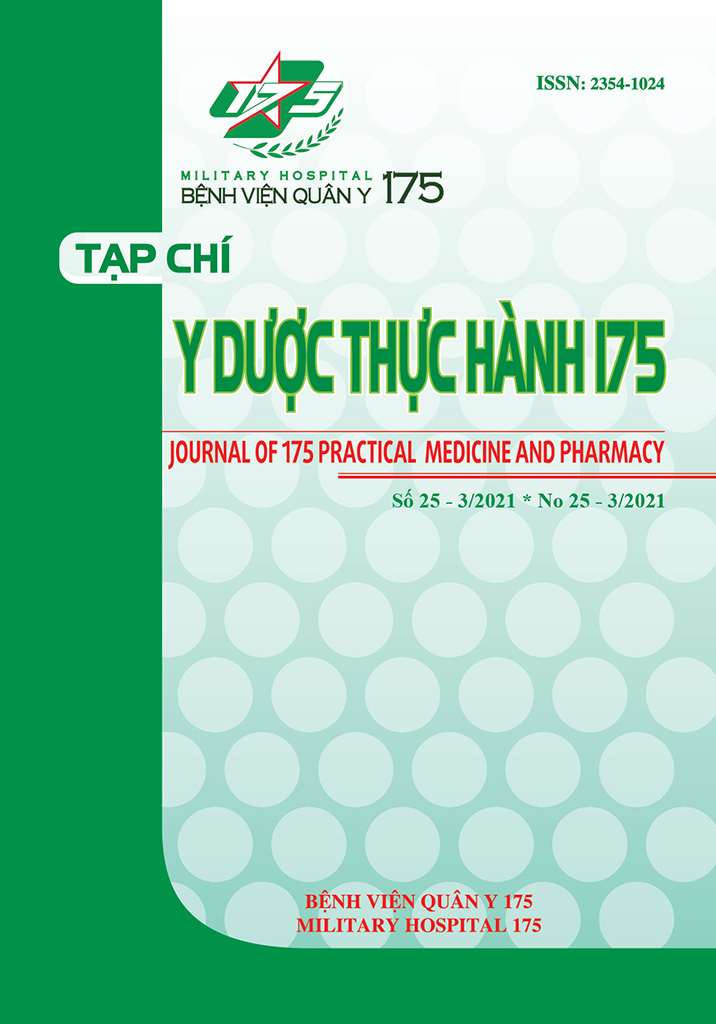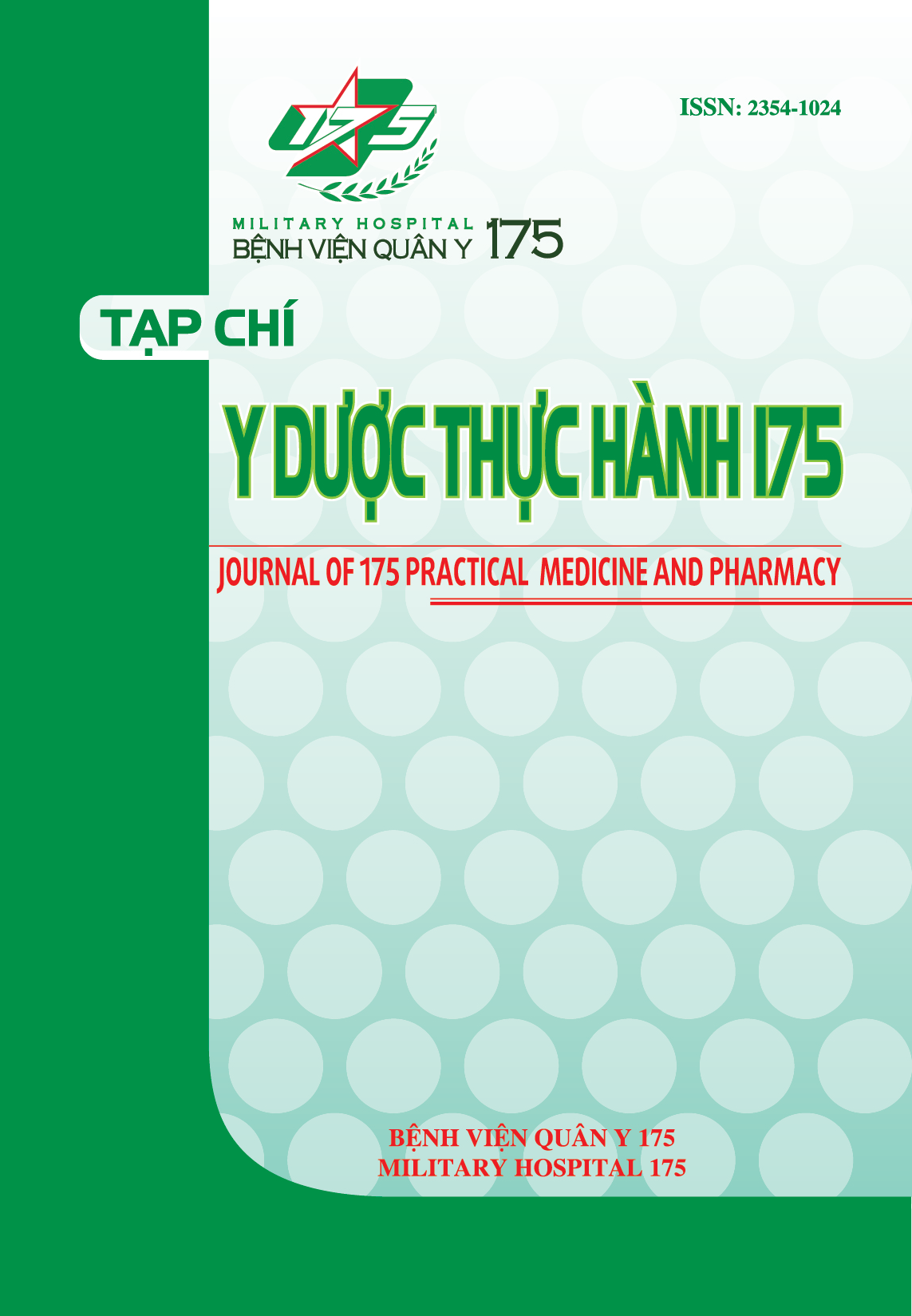THE CORRELATION BETWEEN APPARENT DIFFUSION COEFFICIENT AND IMMUNOHISTOLOGICAL MARKER KI-67 IN GRADING OF GLIOMA
Authors
References
Lê Văn Phước (2011). “Giá trị kỹ thuật cộng hưởng từ phổ và cộng hưởng từ khuếch tán trong phân độ mô học u sao bào trước phẫu thuật”. Tạp chí y học Thành phố Hồ Chí Minh, 15(4), 520-526.
Lê Văn Phước, Nguyễn Văn Khôi, Hoàng Văn Thịnh (2016). “Tương quan giữa hệ số khuếch tán biểu kiến và dấu ấn hóa mô miễn dịch ki67 trong phân độ mô học u thần kinh đệm trước phẫu thuật”. Tạp chí Y học thành phố Hồ Chí Minh, 20(2), 25-29.
Al-Okaili R.N., Krejza J., Wang S., et al (2006). “Advanced MR imaging techniques in the diagnosis of intraaxial brain tumors in adults”. RadioGraphics, 26(1), S173.
Bihan D.L. (2013). “Apparent Diffusion Coefficient and Beyond: What Diffusion MR Imaging Can Tell Us about Tissue Structure”. Radiology, 268(2), 318-322.
Bulakbasi N., Guvenc I., Onguru O., et al (2004). “The added value of the apparent diffusion coefficient calculation to magnetic resonance imaging in the differentiation and grading of malignant brain tumors”. Journal of Computer Assisted Tomography, 28(6), 735-46.
Fudaba H., Shimomura T., Abe T., et al (2014). “Comparison of Multiple Parameters Obtained on 3T Pulsed Arterial Spin-Labeling, Diffusion Tensor Imaging, and MRS and the Ki-67 Labeling Index in Evaluating Glioma Grading”. American Journal of Neuroradiology, 35(11), 2091-2098.
Granli U.S., Torp S.H. (2001). “Proliferative activity in human glioblastomas assessed by various techniques”. Apmis, 109(12), 865-9.
Higano S., Yun X., Kumabe T., et al (2006). “Malignant Astrocytic Tumors: Clinical Importance of Apparent Diffusion Coefficient in Prediction of Grade and Prognosis”. Radiology, 241(3), 839-846.
Kiss R., Dewitte O., Decaestecker C., et al (1997). “The combined determination of proliferative activity and cell density in the prognosis of adult patients with supratentorial high-grade astrocytic tumors”. Am J Clin Pathol, 107(3), 321-31.
Ryu Y.J., Choi S.H., Park S.J., et al (2014). “Glioma: Application of Whole-Tumor Texture Analysis of Diffusion-Weighted Imaging for the Evaluation of Tumor Heterogeneity”. PLOS ONE, 9(9), e108335.
Schmainda K.M. (2012). “Diffusion-weighted MRI as a biomarker for treatment response in glioma”. CNS oncology, 1(2), 169-180.
Sener R.N. (2001). “Diffusion MRI: apparent diffusion coefficient (ADC) values in the normal brain and a classification of brain disorders based on ADC values”. Comput Med Imaging Graph, 25(4), 299-326.
Shahmohammadi M., Fazeli M.A., Janamiri Z., et al (2017). “Correlation of ADC Map with the Ki-67 Index in Glial Tumor Prognosis in Patients of Stereotaxic Ward”. International Clinical Neuroscience Journal, 4(1), 18-24.
Shivaprasad N., Satish S., Ravishankar S., et al (2016). “Ki-67 immunostaining in astrocytomas: Association with histopathological-A South Indian study”. Journal of Neurosciences in Rural Practice, 7(4), 510-514.
Skjulsvik A.J., Mørk J.N., Torp M.O., et al (2014). “Ki-67/MIB- 1 immunostaining in a cohort of human gliomas”. International Journal of Clinical and Experimental Pathology, 7(12), 8905-8910.
Yin Y., Tong D., Zhao R. (2012). “Correlation of apparent diffusion coefficient with Ki-67 in the diagnosis of gliomas”. Wanfang med online, 34(5), 503-508.
Downloads
PDF Downloaded: 72










